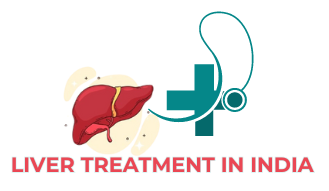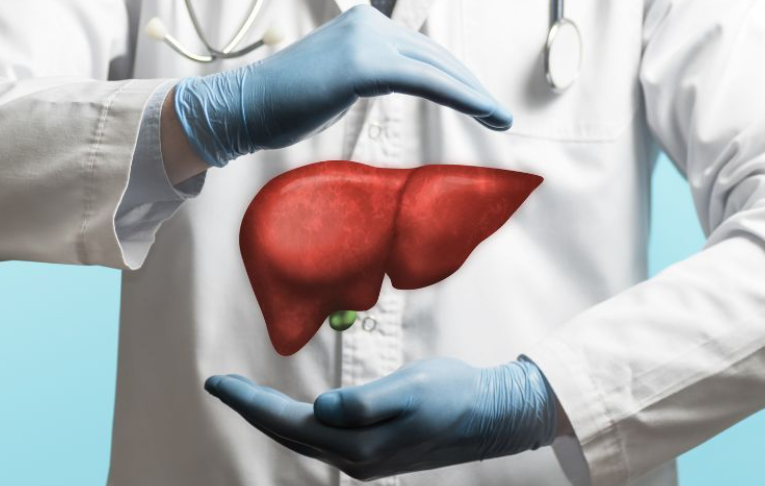Overview: Importance of Rehabilitation and Physical Therapy Post-Liver Surgery
Have you or someone you know recently had liver surgery? Rehabilitation and physical therapy play crucial roles in the recovery process after liver surgery. These components are designed to help patients regain strength, mobility, and overall function following the surgical intervention. key aspects of rehabilitation and physical therapy post-liver surgery are:
- Early Mobilization and Activity Tolerance
- Pain Management and Comfort Optimization
- Respiratory Rehabilitation
- Movement and Strength Training
- Core Stabilization and Functional Training
- Coordination and Balance Activities
- Energy Conservation and Activity Pacing
- Postural Re-Education and Ergonomic Training
- Gradual Return to Functional Activities
Join us as we discuss the vital role these physical therapy play in rebuilding strength, improving mobility, enhancing overall well-being and learn some approaches on rehab exercises after liver operation. Let’s explore how liver surgery rehabilitation can lead to a more seamless and successful recovery.
Effects of Surgery on Mobility and Strength
The effects of surgery on mobility and strength can vary depending on the type of surgery, the individual’s preoperative condition, and the postoperative rehabilitation process. Here are some general considerations regarding the impact of surgery on mobility and strength:
- Surgery can often lead to localized pain and discomfort, which may limit mobility and physical activity in the immediate postoperative period.
- Following surgery, patients may experience joint stiffness due to reduced movement, leading to decreased flexibility and hindering overall mobility.
- Surgery and subsequent immobility can result in muscle atrophy, compromising overall strength and functional capacity, particularly in the muscles directly affected by the surgical intervention.
- Individuals may experience decreased physical endurance and stamina in the immediate aftermath of surgery, potentially impacting overall strength and ability to perform daily activities.
Potential Complications and Limitations
Despite the benefits of Liver surgery rehabilitation and physical therapy, certain complications and limitations following liver surgery may influence the rehabilitation process:
- Pain and Discomfort: Persistent pain and discomfort can affect a patient’s participation in physical therapy exercises. Pain management strategies and tailored rehabilitation plans are essential to address this challenge.
- Surgical Wound Healing: The presence of surgical wounds and related precautions may temporarily limit the range of motion and intensity of certain exercises. Physical therapists modify treatment plans to accommodate wound healing while promoting gradual progress.
Liver Surgery Rehabilitation Goals and Objectives
The goals and objectives of rehabilitation after liver surgery are tailored to address the specific needs of each individual, encompassing physical, emotional, and functional aspects of recovery.
Restoring Mobility and Functional Independence
- Regain the ability to move comfortably, safely, and with increased independence after surgery, addressing any limitations in walking or daily activities.
- Regain independence in performing essential daily activities such as walking, dressing, bathing, and other self-care tasks.
- Improve walking patterns, balance, and overall gait, ensuring safe and confident mobility post-surgery.
- Explore the use of assistive devices or adaptive strategies to facilitate independent living and enhance functional capabilities if needed.
Minimizing Pain and Discomfort
- Minimize postoperative pain through targeted interventions, allowing for improved mobility, functional activities, and overall well-being.
- Counteract the effects of prolonged bed rest and immobility, working to prevent muscular atrophy and overall physical deconditioning.
Promoting Recovery and Preventing Complications
- Support the gradual return to physical activities and rehab exercises after liver operation, fostering long-term physical fitness and wellness beyond the immediate postoperative phase.
- Educate patients about signs, symptoms, and preventative measures related to potential postoperative complications, empowering them with the knowledge to safeguard their health.
Early Postoperative Rehabilitation Protocols
Early postoperative liver surgery rehabilitation protocols are designed to initiate the recovery process, promote mobility, and prevent complications. These protocols aim to facilitate a gradual return to function while minimizing the risk of postoperative complications.
Breathing Exercises and Airway Clearance Techniques
- Initiate respiratory exercises to promote lung expansion, prevent atelectasis, and improve respiratory function.
- Encourage the use of incentive spirometry to optimize lung volumes and prevent pulmonary complications associated with reduced respiratory function.
Early Mobilization and Ambulation
- Encourage gentle ambulation as soon as feasible, generally within the first 24 to 48 hours post-surgery, to promote blood circulation, prevent complications related to immobility, and initiate the reconditioning process.
- Monitor the patient’s response to activity and assess their tolerance, adjusting mobility goals based on individual comfort and physiological status.
- Employ proper positioning techniques and encourage active or assisted turning in bed to prevent pressure ulcers and maintain skin integrity.
Pain Management Strategies
- Utilize pain assessment tools to monitor pain levels, ensuring timely pain control through pharmacological and non-pharmacological interventions.
- Advocate for proper positioning techniques and use of supportive pillows or cushions to alleviate discomfort and optimize postoperative comfort.
Physical Therapy Interventions for Functional Restoration
By integrating following physical therapy interventions, individuals undergoing liver surgery can experience a comprehensive rehabilitation program focused on restoring function, promoting independence, and optimizing their overall physical well-being during the recovery process.
Range of Motion Exercises for Joint Flexibility
- Foster joint flexibility and range of motion through targeted exercises, addressing any stiffness or limitations in joint mobility related to the surgical procedure and postoperative recovery.
- Administer a comprehensive stretching program to promote overall flexibility, targeting key muscle groups and addressing any postoperative restrictions in movement.
Strengthening Exercises for Muscle Reconditioning
- Gradually introduce resistance exercises to rebuild muscular strength and endurance, customizing the program to address individual muscle groups and areas of weakness.
- Systematically increase the intensity of resistance and weight-bearing activities as the patient’s strength and tolerance improve, fostering continued functional gains.
Balance and Coordination Training
- Implement rehab exercises after liver operation to engage and strengthen the abdominal and trunk musculature, promoting core stability and enhancing postural control.
- Incorporate balance exercises to improve proprioception and overall stability, reducing the risk of falls and optimizing functional mobility.
Rehabilitation Strategies for Specific Liver Surgery Procedures
Rehabilitation strategies for specific liver surgery procedures can vary based on the nature of the surgery, whether it involves resection, transplantation, or other interventions. Tailored liver surgery rehabilitation approaches take into consideration the unique considerations and challenges associated with each procedure.
Hepatectomy Rehabilitation Considerations
After undergoing a hepatectomy, rehabilitation considerations are important to ensure a safe and successful recovery. Here are some key points to keep in mind:
- Follow your healthcare provider’s instructions: It is crucial to adhere to the recommendations provided by your healthcare team regarding post-operative care, medication management, and follow-up appointments.
- Gradual physical activity: Engage in light physical activity as recommended by your healthcare provider to promote healing and prevent complications. Gradually increase activity levels as tolerated.
- Balanced diet: Maintain a healthy and balanced diet rich in nutrients to support healing and overall health. Avoid foods that may put stress on the liver.
- Pain management: Proper pain management is essential during the recovery period. Follow your healthcare provider’s recommendations for pain relief medications and rehabilitation techniques for liver surgery recovery.
- Emotional support: Surgery can be a stressful experience, so it’s important to seek emotional support from friends, family, or a counsellor if needed.
Liver Transplant Rehabilitation Protocols
- Respiratory Rehabilitation: Focus on respiratory exercises, coughing techniques, and breathing strategies to enhance lung function and prevent pulmonary complications associated with the transplantation procedure.
- Progressive Endurance Training: Gradually increase cardiovascular conditioning and endurance activities, taking into account the patient’s immunological status and potential limitations related to the liver transplant surgery.
- Immunization and Infection Control: Provide education on immunization schedules, infection prevention measures, and early signs of infection to minimize the risk of post-transplant complications.
- Education on Complex Medication Regimens: Support patients in understanding and managing the complex medication regimen associated with post-transplant care, emphasizing the importance of medication adherence for long-term health.
Biliary Surgery Rehabilitation Approaches
Rehabilitation after liver surgery like biliary surgery typically includes a mix of physical therapy, dietary adjustments, pain control, and lifestyle changes to aid in recovery and regain function. Physical therapy post-liver surgery may involve gentle exercises aimed at improving flexibility and strength in the abdominal and upper body muscles. Dietary changes often involve transitioning from a liquid to solid diet gradually to prevent digestive issues. Strategies for managing pain may include medications or alternative therapies like acupuncture or massage. Making lifestyle changes, such as quitting smoking and maintaining a healthy weight, can also aid in recovery. Collaborating closely with healthcare professionals specially someone who runs recovery program for liver surgery patients, to create a personalized rehabilitation plan tailored to individual needs and surgical results is crucial.
Multidisciplinary Collaboration in Rehabilitation Care
Multidisciplinary collaboration in liver surgery rehabilitation is crucial for the overall well-being and recovery of the patient. By involving various healthcare professionals such as liver treatment doctor, nurses, physical therapists, dietitians, and mental health professionals, patients can receive comprehensive care that addresses their physical, emotional, and nutritional needs.
multidisciplinary collaboration can help in developing personalized rehabilitation plans that take into account the specific needs and challenges of each patient. For example, a physical therapist can work with the patient to improve mobility and strength after surgery, while a dietitian can provide guidance on nutrition to support liver health and promote healing.
Additionally, mental health professionals can offer support to patients who may be experiencing anxiety or depression related to their surgery, helping them cope with the emotional impact of the procedure. Collaborating as a team, healthcare professionals, such as liver transplant doctors, can ensure that patients receive comprehensive care that enhances their overall recovery and quality of life.
Long-Term Rehabilitation and Follow-up Care
Long-term rehabilitation and follow-up care for liver surgery are crucial for a successful recovery and overall improvement in quality of life. After undergoing liver surgery, individuals may face various challenges that require ongoing support and monitoring. Here are some key aspects of long-term rehabilitation and follow-up care:
- Medication Management: Patients may need to take medications to manage pain, prevent infections, support liver function, or address other health issues. It is important to follow the prescribed medication regimen and report any side effects or concerns to the healthcare provider.
- Lifestyle Modifications: Following liver surgery, adopting a healthy lifestyle can promote healing and overall well-being. This may include maintaining a balanced diet, engaging in regular physical activity, avoiding alcohol and tobacco, and managing stress.
- Nutritional Support: It is essential to maintain proper nutrition for optimal recovery following liver surgery. Patients should adhere to dietary recommendations provided by their closest liver transplant doctor, which may include a low-fat diet, higher protein consumption, and vitamin supplements tailored to their individual requirements.
- Education and Self-Management: Empowering patients with knowledge about their condition, treatment, and self-care strategies can improve their ability to manage their health effectively. Education on warning signs, potential complications, and strategies for self-monitoring can promote early detection and intervention.
The journey of rehabilitation and physical therapy post-liver surgery is a crucial part of the recovery process that requires patience, dedication, and expert guidance. By following a personalized treatment plan and working closely with healthcare professionals someone who has great expertise in the field just like the experts we are associated with, patients can gradually regain their strength, mobility, and overall well-being. Remember, the road to full recovery may have its challenges, but with perseverance and a positive mindset, every step forward brings you closer to a healthier tomorrow. Stay committed to your rehabilitation journey, and success will surely follow.

